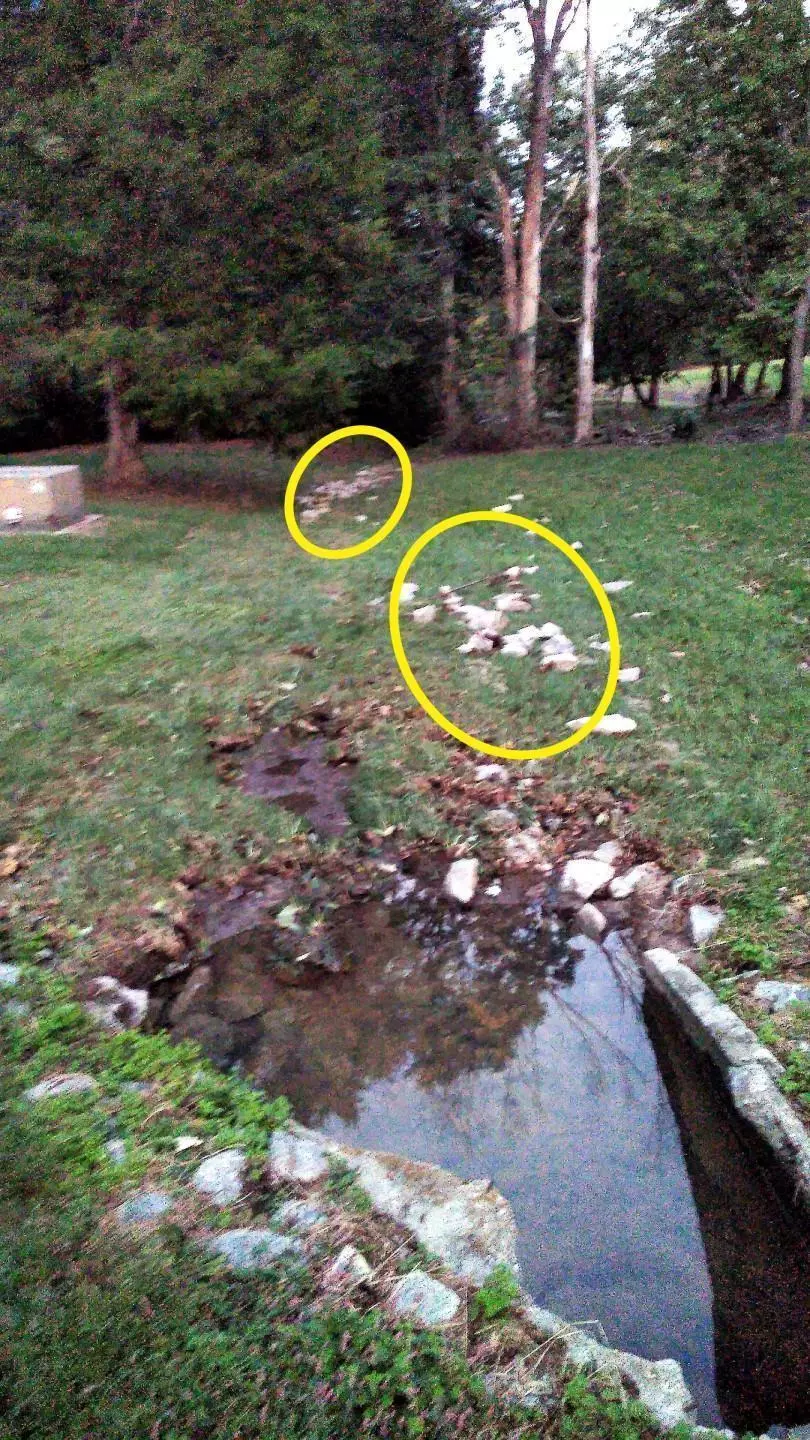Tropical Storms Florence and Michael, while having similar rainfall, had one very significant difference. What was it, and how does it apply to business?

Two recent tropical storms hitting our area, Florence and Michael, illustrate the difference between work and power.
What Happened ...
Both storms dumped many inches of rain on the Piedmont Triad – about 7.5 inches for Florence and about 7 inches for Michael. The difference is in how quickly they did so – Florence's rain fell in waves over 4-5 days, while Michael's rain came in one 4-5 hour torrential downpour.
The results? Here's a photo from my yard:

I took this photo two days after Michael. It shows two groups of rocks, spanning about 70 feet – the nearer group in the foreground on the right, and the farther group extending from the cedar tree to the tree line (yes, those are rocks – many happen to be covered by debris). Both groups washed out of a drainage culvert between our property and that of our neighbors. Which storm moved only two rocks? Florence. The rest of the rocks? Michael.
The total inches of rain from both storms was about the same, so the total volume of water running through the storm drains and into the culvert (and ultimately into the pond) was about the same. The difference was how quickly the rain came down, and the impact this had on the rocks – Florence's more gradual rainfall moved only two rocks, while Michael moved 12 wheelbarrows of rocks.
Based on the rocks moved, we would intuitively say Michael was a more powerful storm than Florence – and, from a physics standpoint, our intuition would be correct.
- Work is, for example, the force required to move a 5 pound rock a distance of 20 feet – it does not matter how quickly the rock moves 20 feet, the Work is the same.
- Power is a measure of how quickly Work is performed – if, say, Florence moved a 5 pound rock 20 feet in 40 hours, while Michael moved the same rock the same distance in 2 hours, then Michael's Power was 20 times that of Florence.
Lessons for Business
Switching from physics to business, I've made a few observations, based on the differences between Florence and Michael.
Faster Work = Faster Results – In business, results come from the work of People, amplified by Process and Technology. To obtain the same results more quickly – to move from Florence to Michael – either add more people, or improve the process and technology used by the people.
- Improving Results – When improving results, my preference is to avoid adding people, focusing instead on improving the process and technology – this holds for both my business and those of our clients. If I know process and technology have been sufficiently improved, yet results have not improved, my conclusion is simple – my client or I has a people problem, a situation outside the scope of our client work.
- Improving Results Quickly – I prefer to improve results as quickly as possible – once again, this is true in both my business and those of clients we serve. Thus, I prefer for my staff and I to bring a Michael–like approach in tackling issues.
"Stuff Happens" ... – "Stuff" can happen to a business quickly (like Michael), or it can happen slowly (like Florence). Examples of the first would be a server crash or a physical disaster for the business, while examples for the second could be "system erosion" or "evolved processes". The "Quickly" case is easier to detect, while the "Slowly" ones can easily get lost among other priorities.
- Detecting "Stuff" – I've been caught off guard in my business a few times, generally because I've been too optimistic about projects coming through – thus, I've put in place a set of processes and metrics to give me advance warning of possible issues. By nature, these are forward-looking and are focused on our top-line revenue. Virtually all of our clients have similar processes and metrics.
- Addressing "Stuff" Quickly – Regardless of whether "stuff" happened quickly or slowly, my instinct is to address it as quickly as possible. Detecting it, yet not addressing it, does not make the problem go away – it likely makes it worse. In the wonderful little book The Four Agreements, Don Miguel Ruiz discusses changing agreements we've made with ourselves – and changing these ultimately changes behaviors – as follows:
We cannot change an agreement with less power than we used to make the agreement. (page 110)
I like that the author used the word power because it implies work performed over a period of time – whatever agreements we've made with ourselves did not happen overnight, and thus require time to change. Adapting this for business use, I'd phrase things this way:
We cannot change a problem with less power than was used to create the problem.
This phrase also has implications for how we address the "Slowly" versus the "Quickly" problems:
- For a problem like system erosion or evolved processes, the problem developed gradually over many years. You don't want to spend years fixing the problem, do you?
- For a problem like a server crash or physical disaster, you really have no choice but to respond quickly ... unless you choose to close shop.
Bringing Power to Bear
Need to get some strategic objectives rolling? Need to respond more quickly when "stuff" happens? You definitely need Power and not merely Work. Often, we can help provide that Power, so please call or email anytime, and we can discuss how we might meet your needs.
Sincerely,

Todd L. Herman






